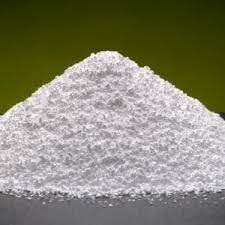Teflon (PTFE) billets are compression molded tubes and rods made of Polytetrafluorethylene used in numerous industrial applications covering almost every industry, including chemical processing, automotive, food, aerospace, medical device, semiconductor, and fluid handling. These functional parts are popular due to Teflon’s chemical resistance, extreme temperatures, low friction properties, and ability to mold them into the precise shape and size needed.
Types of Molded PTFE Billets
The molded processing techniques we employ are compression, isostatic, and automatic. The determination of which method to use will depend on the type and size of billets being produced, the industry they are being used in, and the manufacturer’s preference.
Compression
Compression molding for PTFE billets is one of the three main processes, with isostatic and automatic as the other options (we will discuss these in a later article). To make a billet using this process, one must design and create the source mold for the rod or tube. The compression mold is a two-part mold that includes a preform component.
The performance has the same shape as the tube or rod being processed. The material is loaded into the mold, pressed under specific pressure and time depending on the grade of PTFE being processed, and then ejected for the mold.
The pressure causes the material inside the preform to conform to the mold’s shape. As a result, any excess material leaks out of the mold. Once the molding process is complete, the billet is ejected from the mold.
Once the billet is extracted from the mold, it is now in what is called the “Green State,” compact into the desired shape, but no molecular change has occurred; this only happens after sintering in our ovens for a designated time between 650 to 715 degrees F.
The billet is left to cool at room temperature. Once cooled, excess material can be machined off to make a smooth, perfectly formed Teflon billet.
Advantages of using compression molding include:
- Strong parts
- Lower tooling costs
- Broad design options
- Lower waste generation
- Large part manufacturing
Sintering Molded Tubes, Rods, or Semi-Finished Parts.
Sintering results in a change in the PTFE powder that reorganizes the molecules into a compound. To sinter Teflon billets:
- Temperatures must be between 675°F and 700 °F (357°C and 371°C).
- The oven must have good airflow.
Billets must be supported to ensure that they do not sag
Adding an annealing cycle during the sintering processes will help to stop cracks from forming while the compound bakes. Once the billets are out of the oven and cooled to room temperature, they can be machined.
Molding Process
While all molds have physical property variations, the overall process is similar. Therefore, the variations between compression, isostatic, and automatic molded billets are inconsequential to the prevalent use.
The molding process is two-step. It begins with packing the mold and pressing the powder, called the “green state.” Next, the mold is placed under specified pressures depending on whether the material is unfilled (Virgin) or filled with various fillers, glass, carbon, graphite, etc. pressure of up to i.
After pressing, the item is removed from the mold. Workers must be careful during the ejecting of the tube or rod. Mishandling of the green material could result in cracks. Once the mold is removed, the billet is sintered.
conclusion
Molded PTFE billets are ideal for many industries. The properties of PTFE make them chemical resistant, have a low coefficient of friction, and can be manufactured compliant with FDA, Class VI Medical, NACE, Aerospace, and Semiconductor Standards approved for use in medical and food industries. In addition, clean Room Molding for Ultra Pure applications is available.


